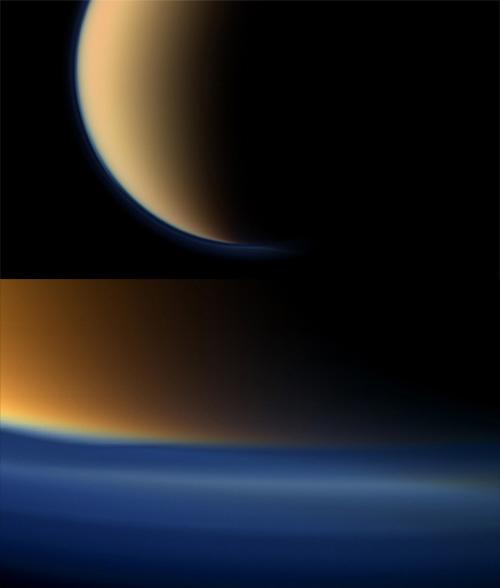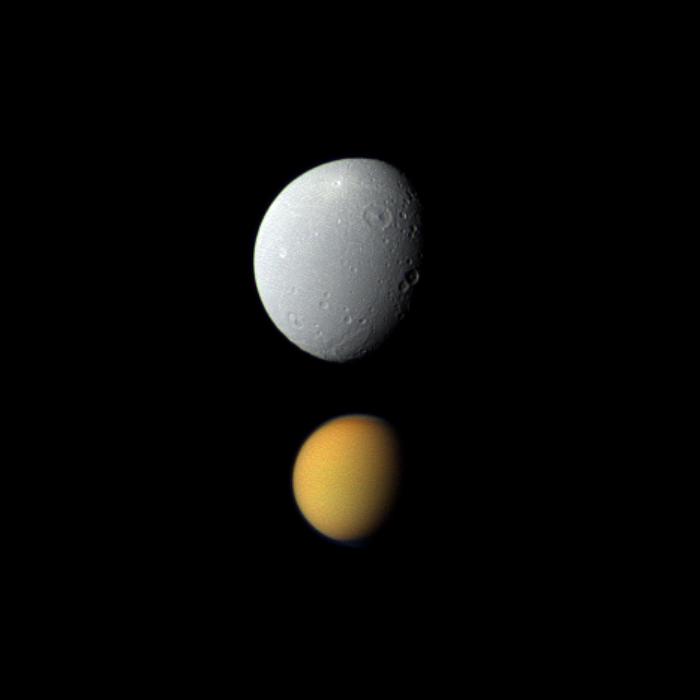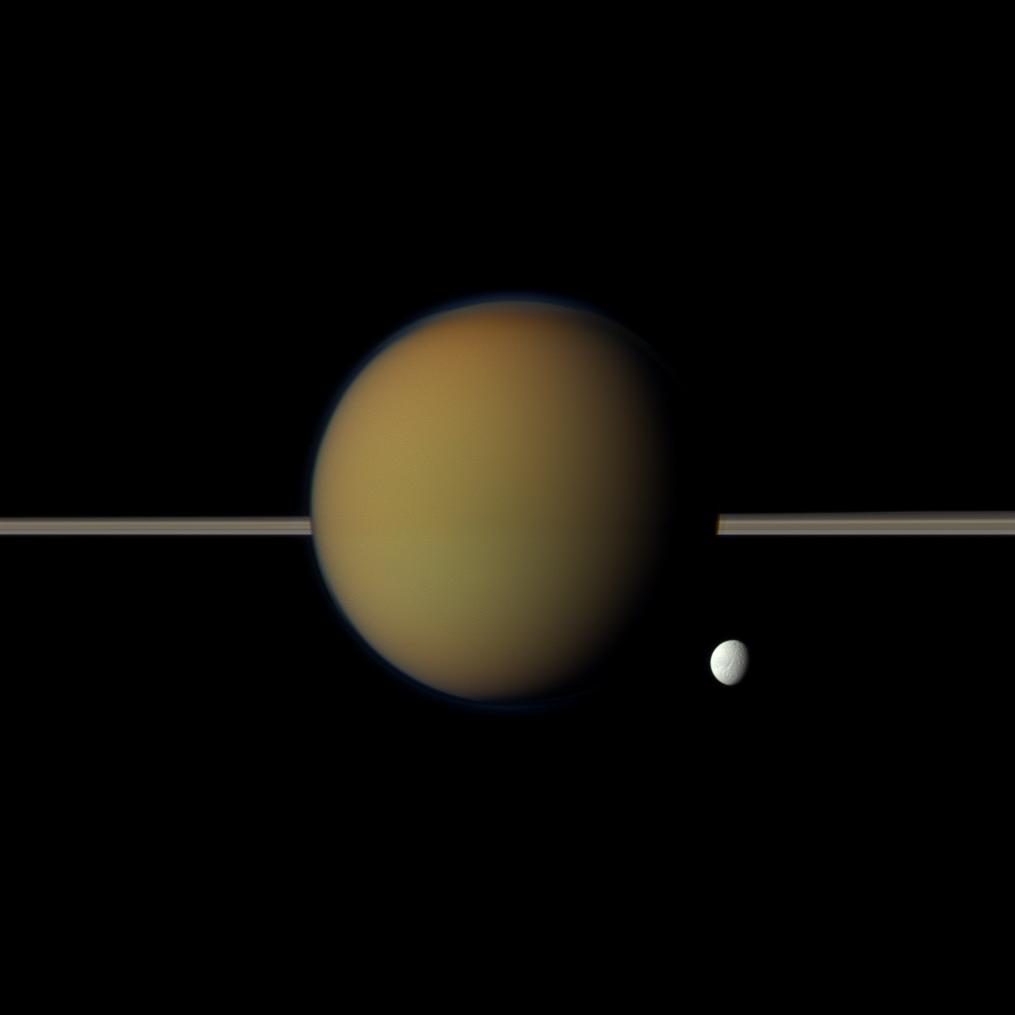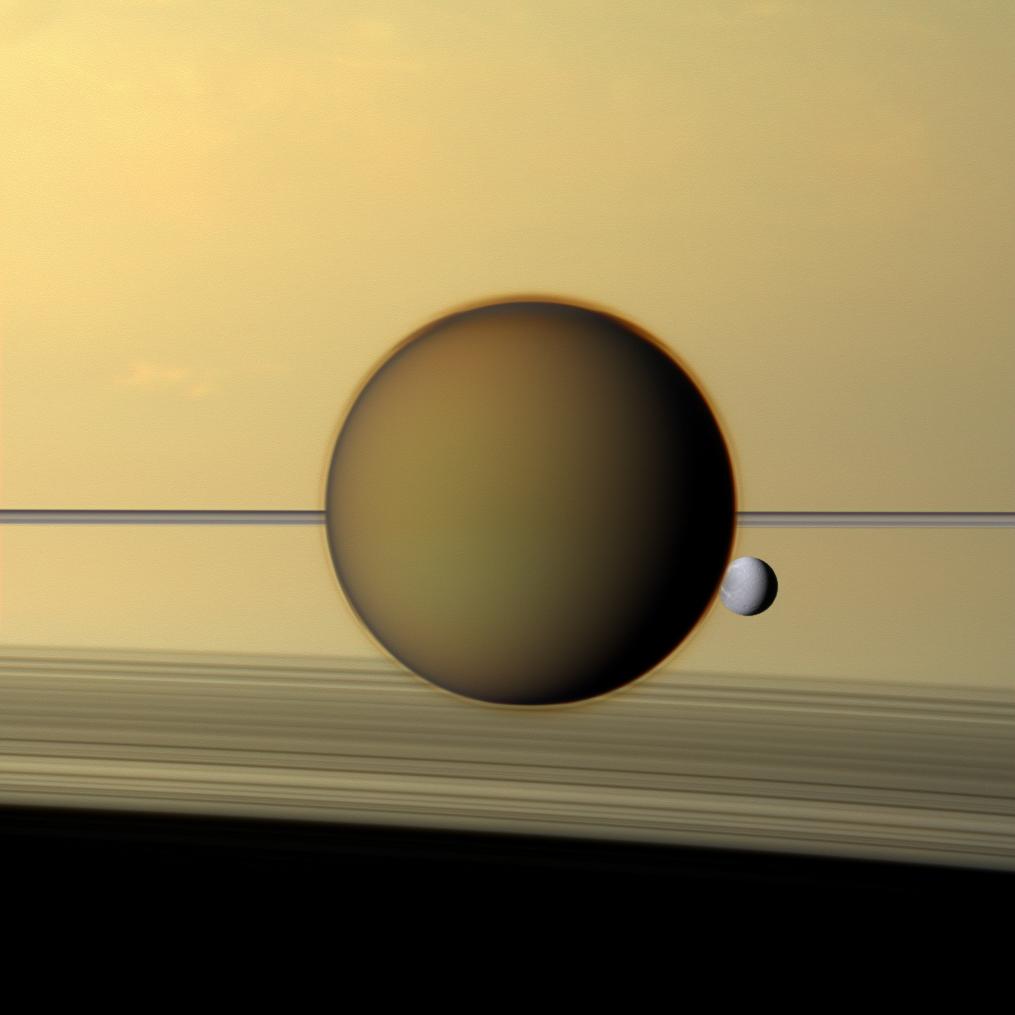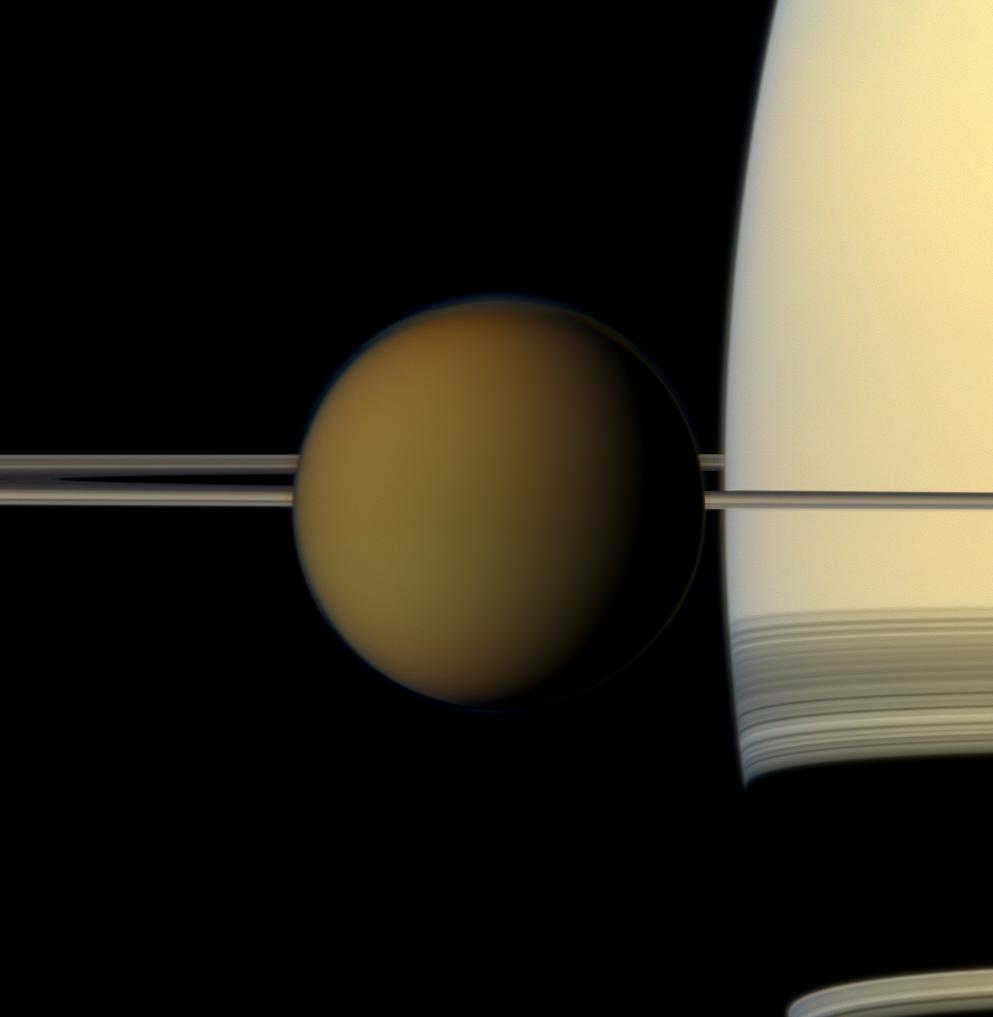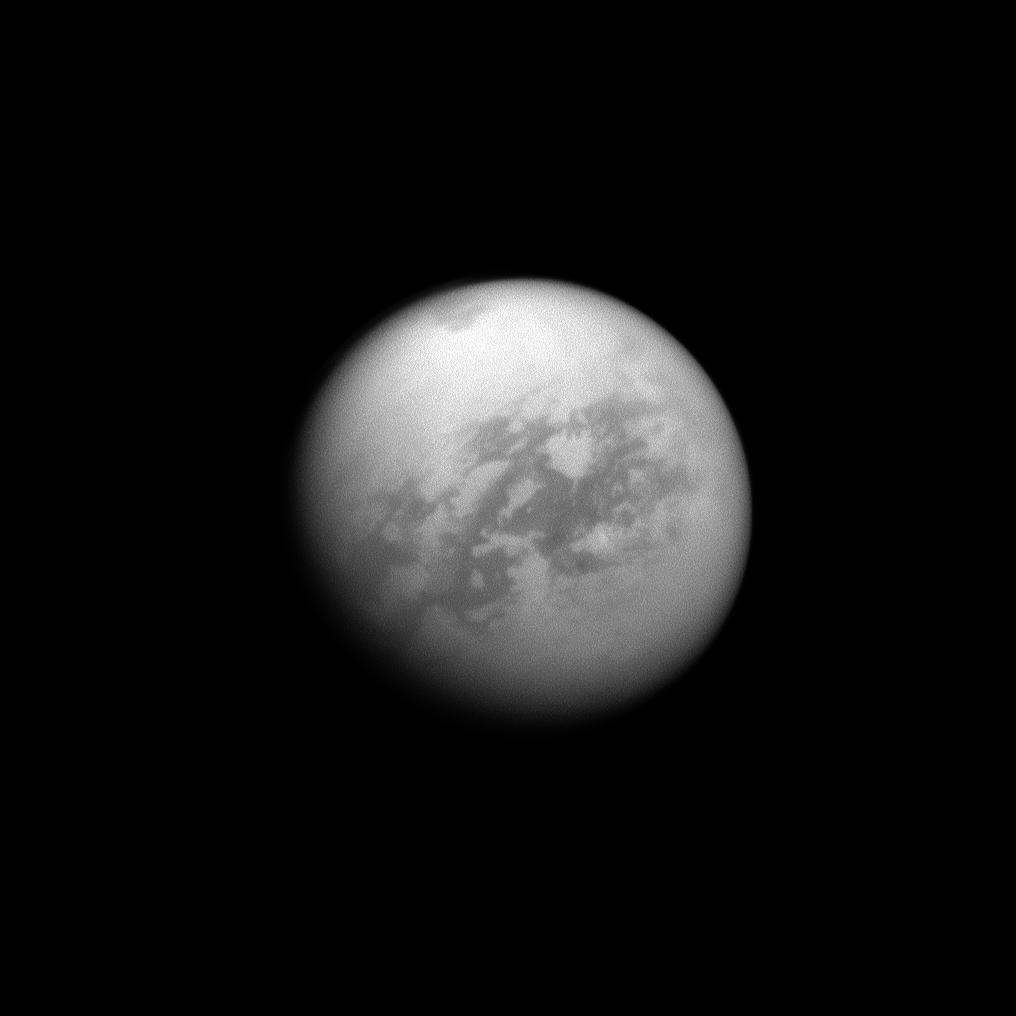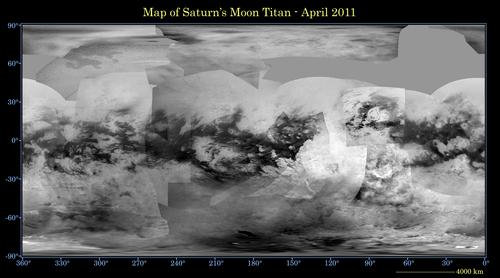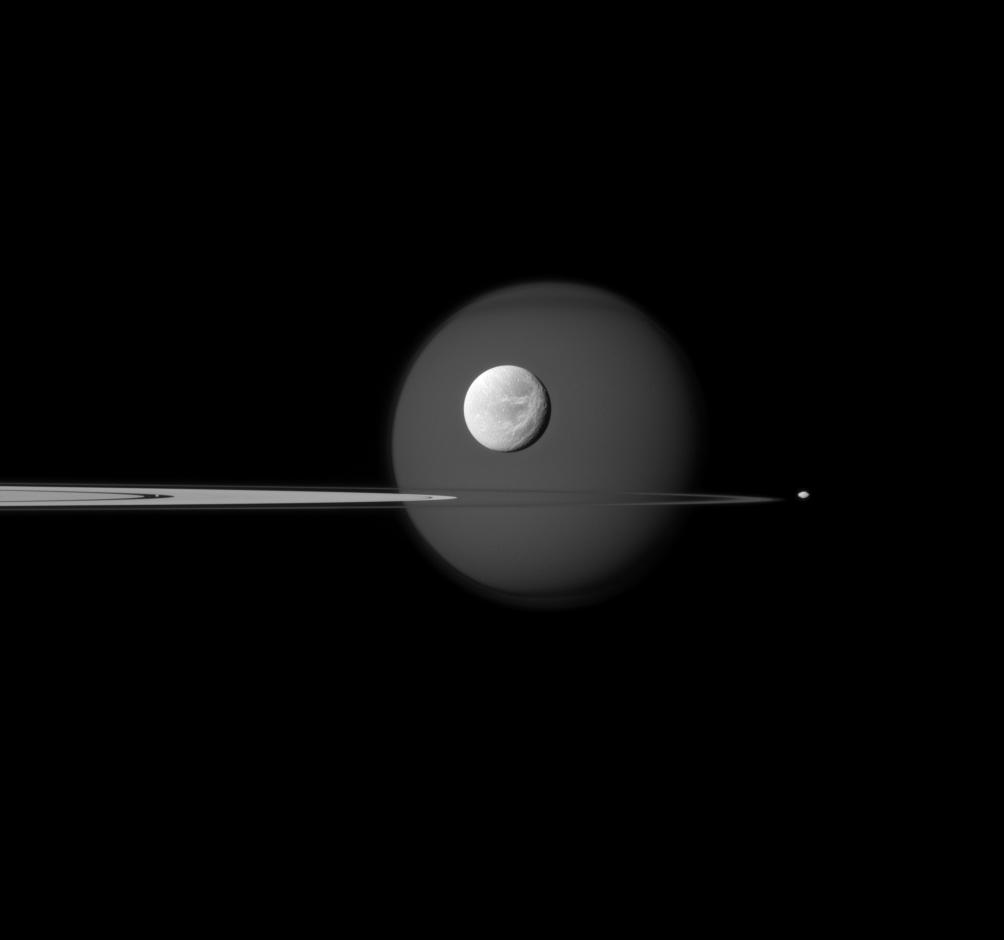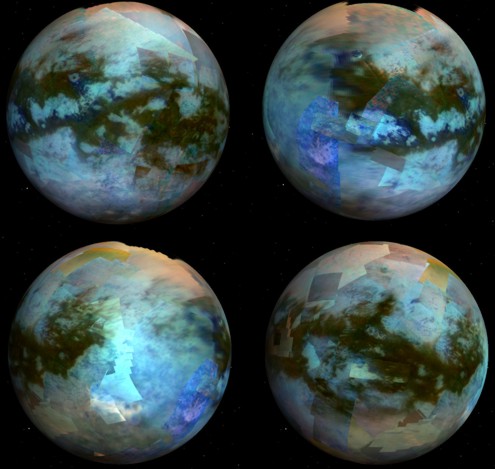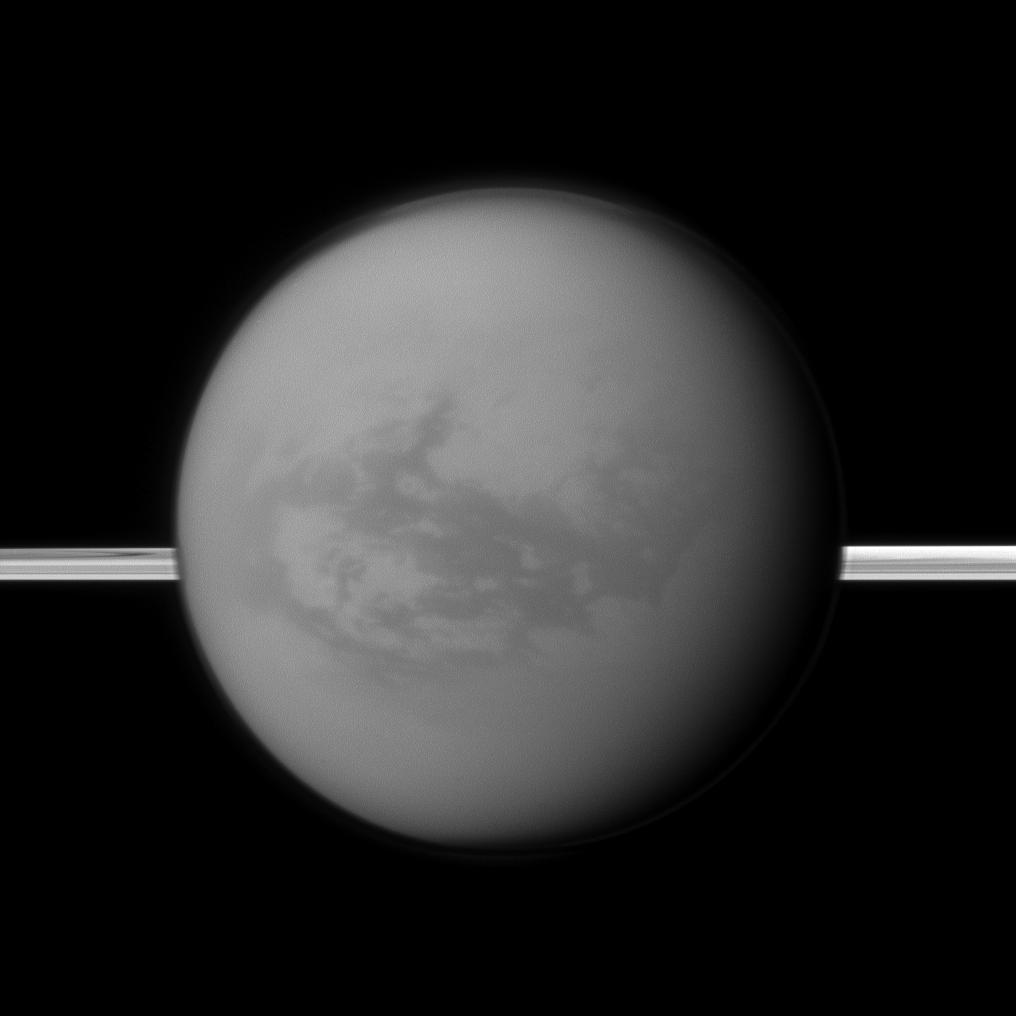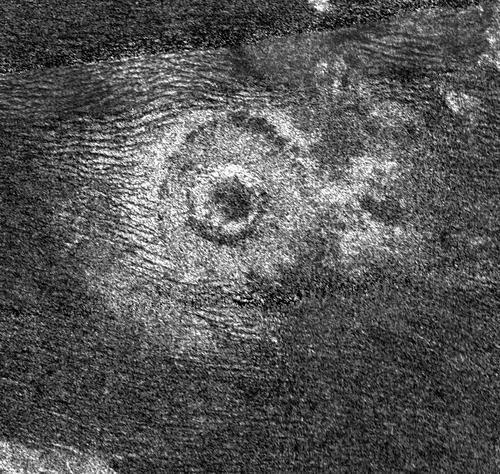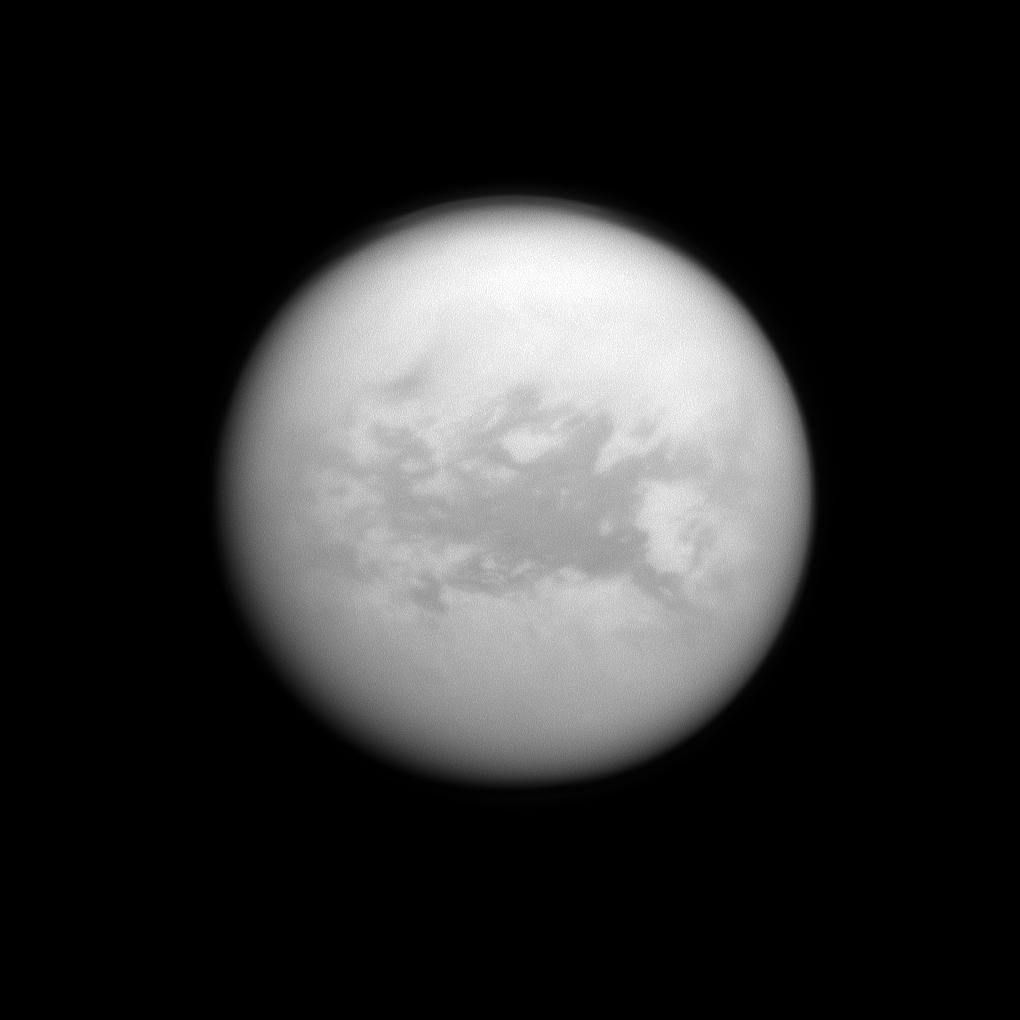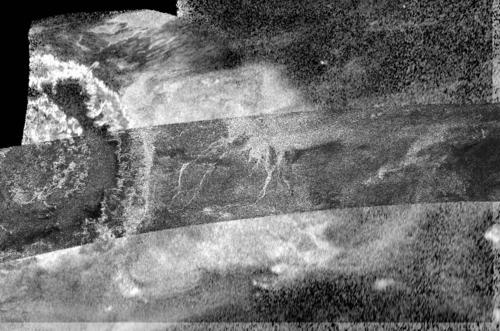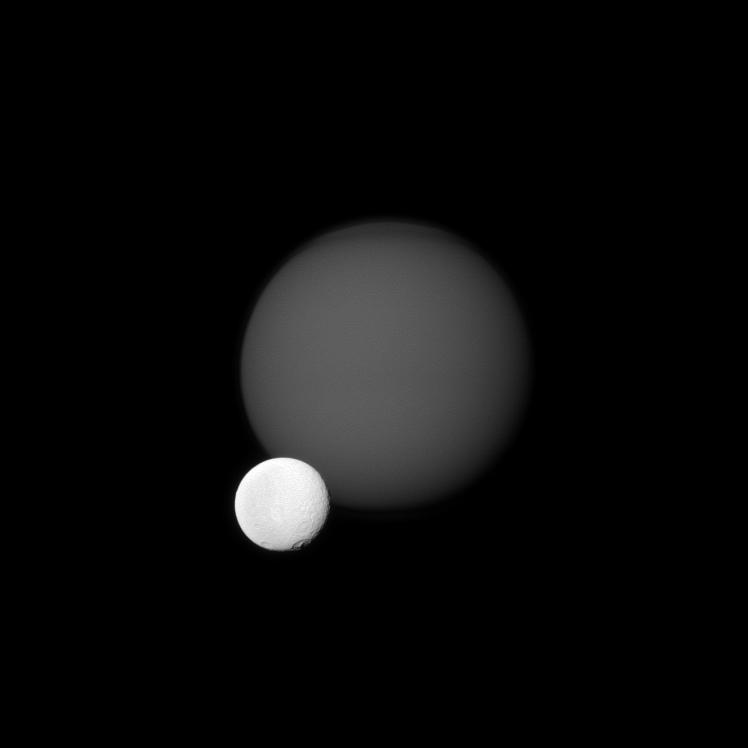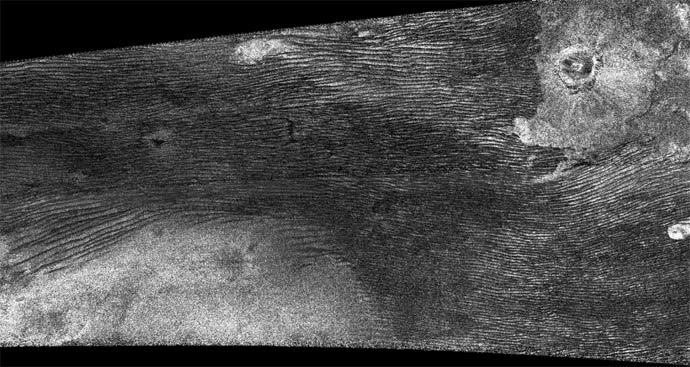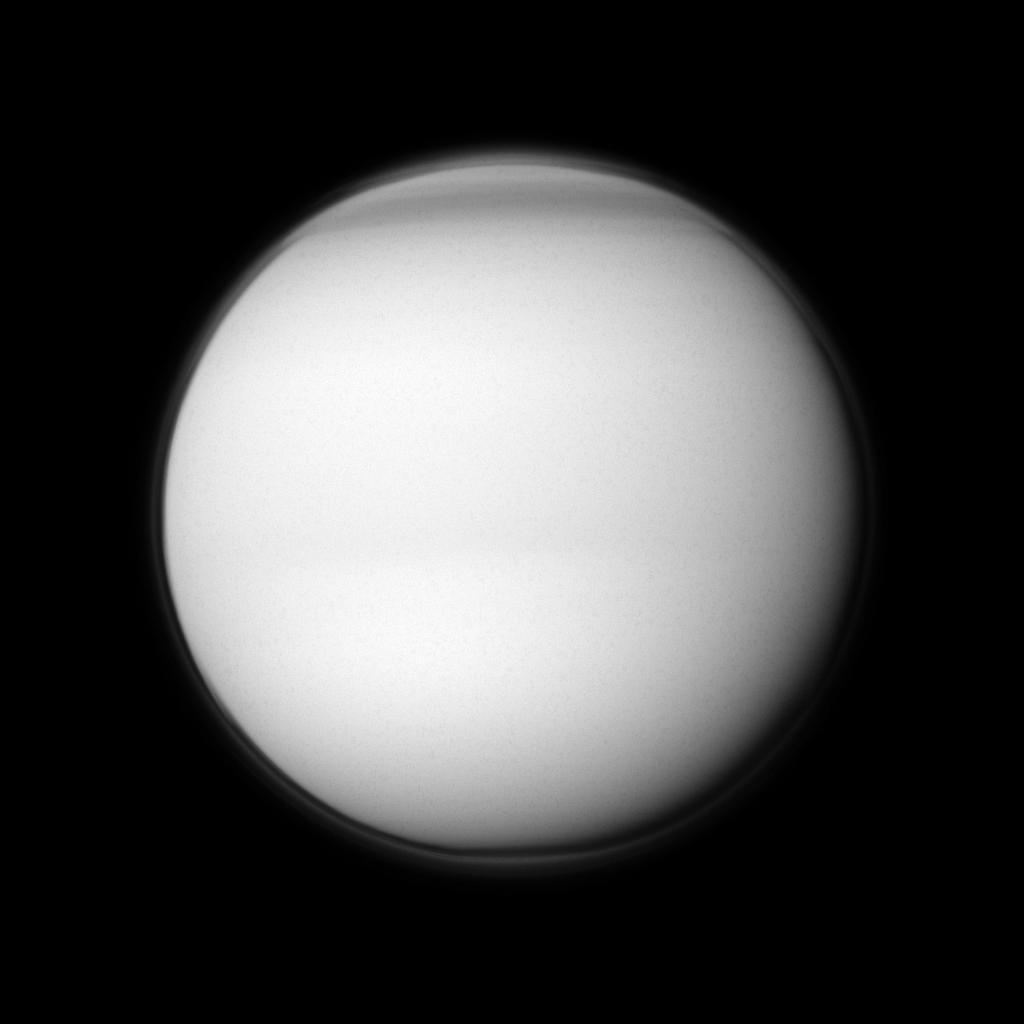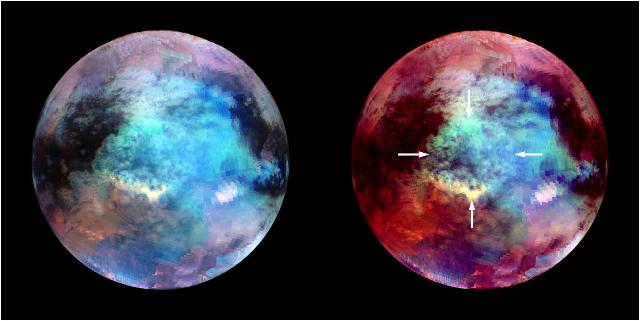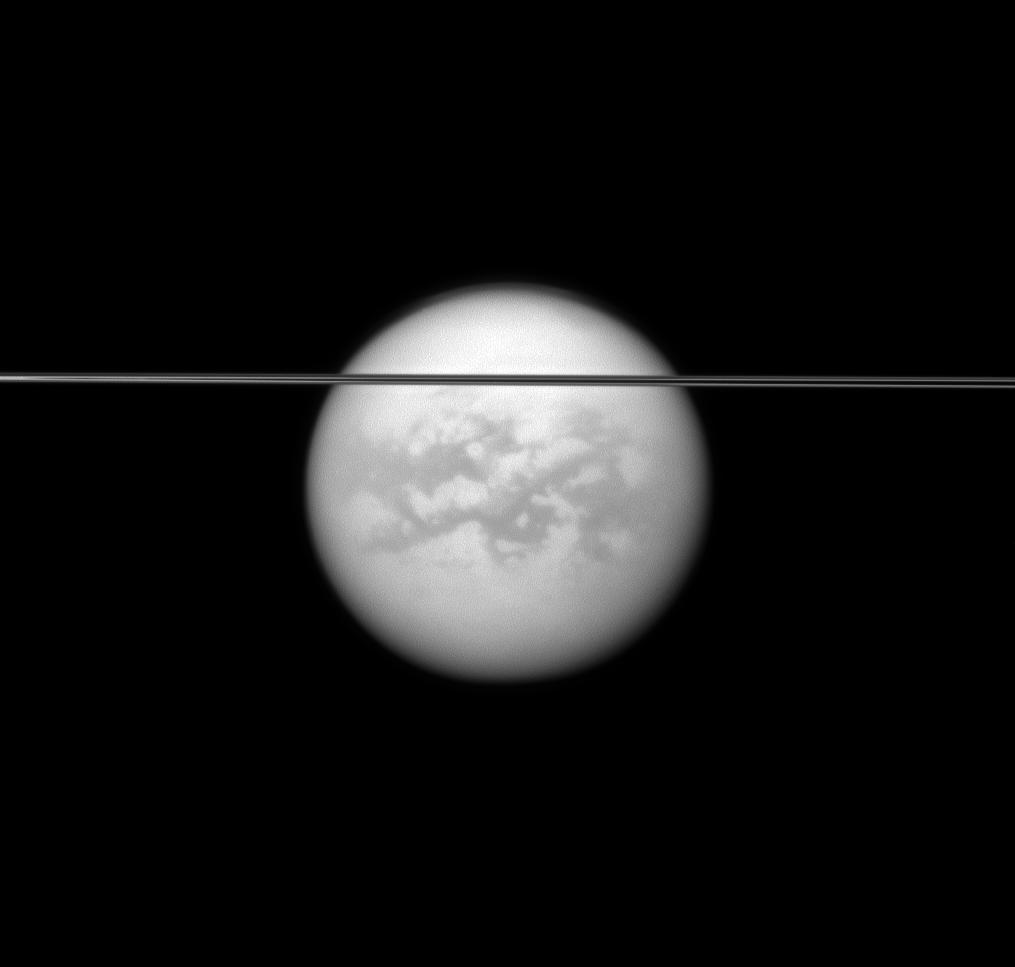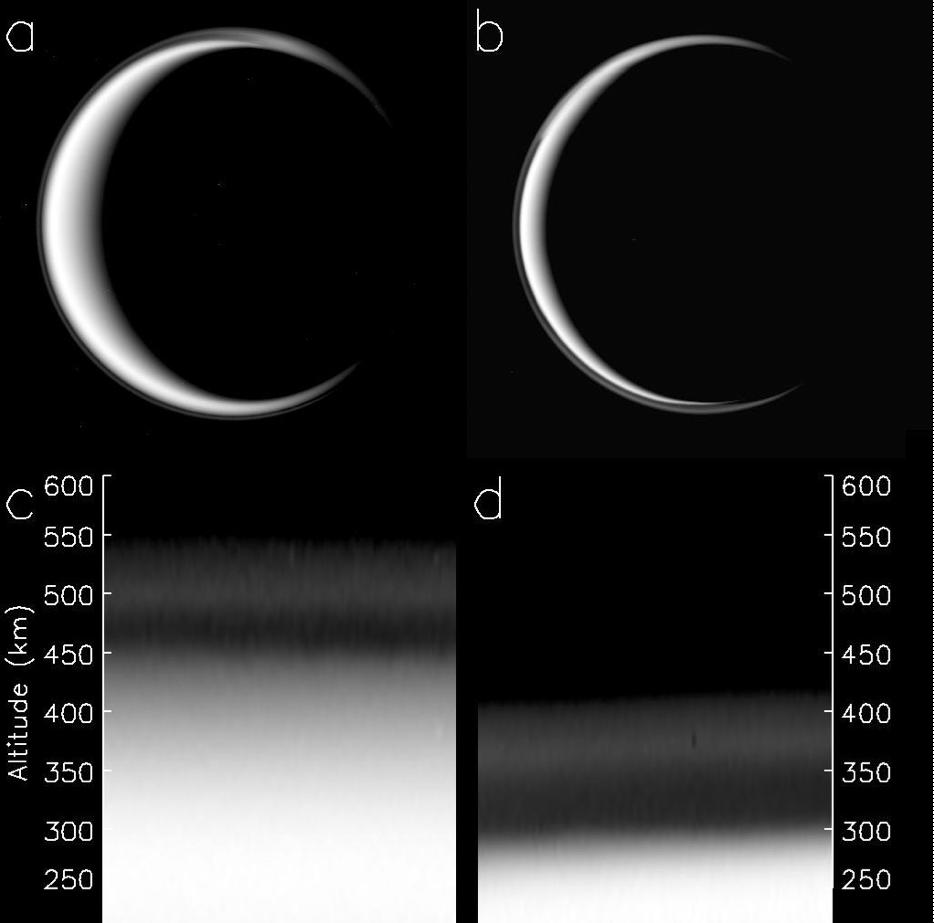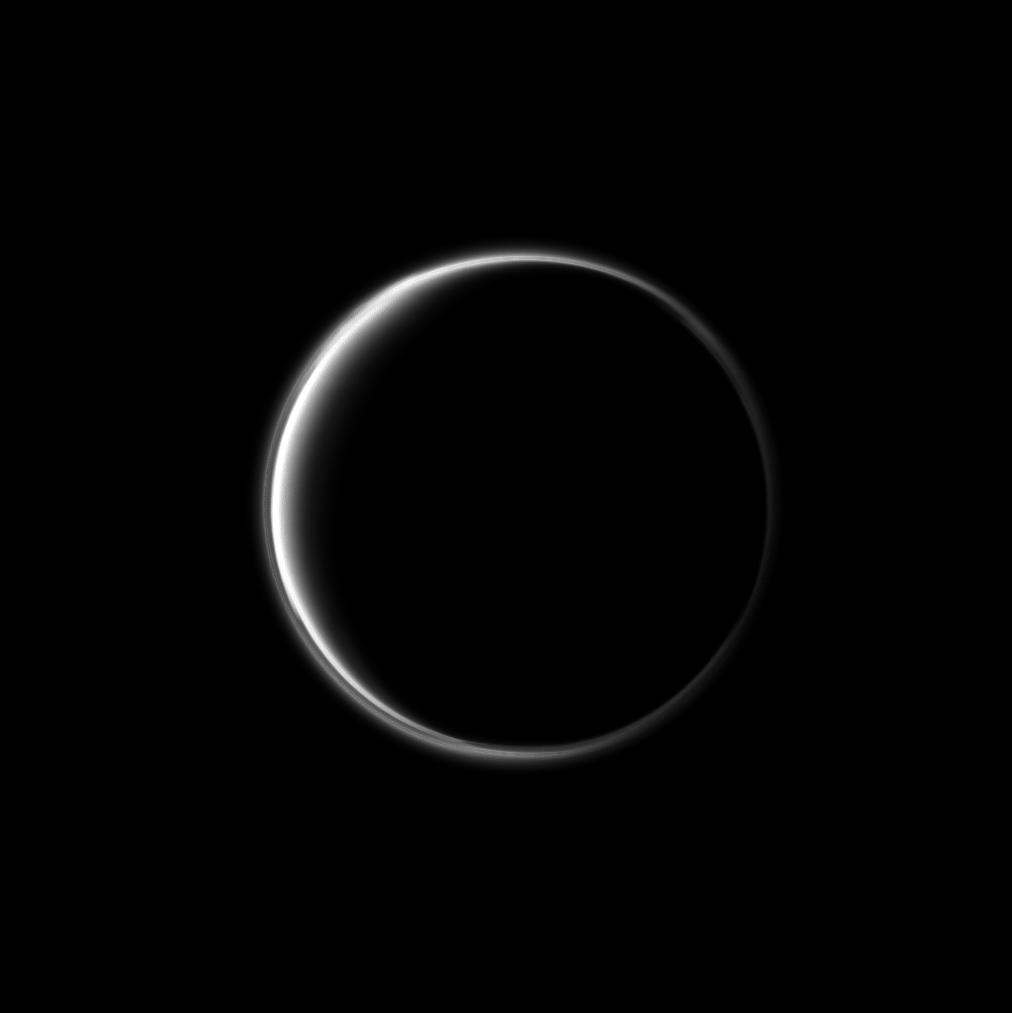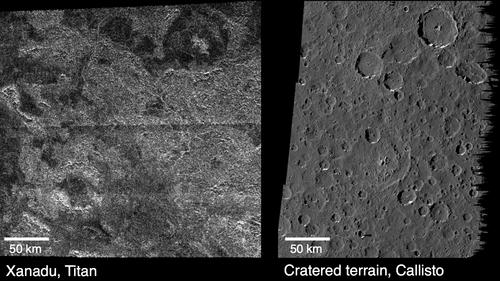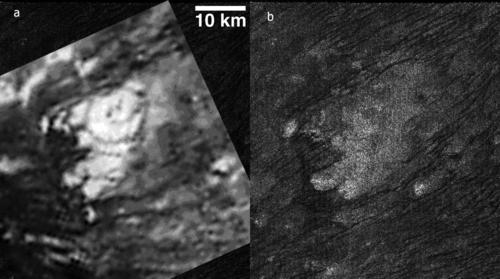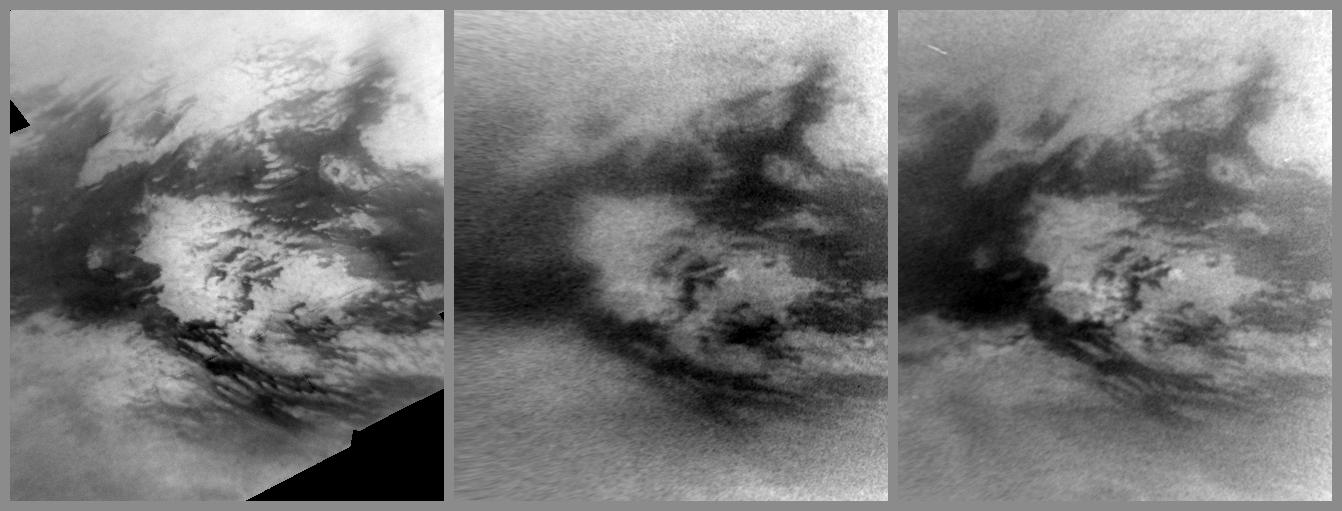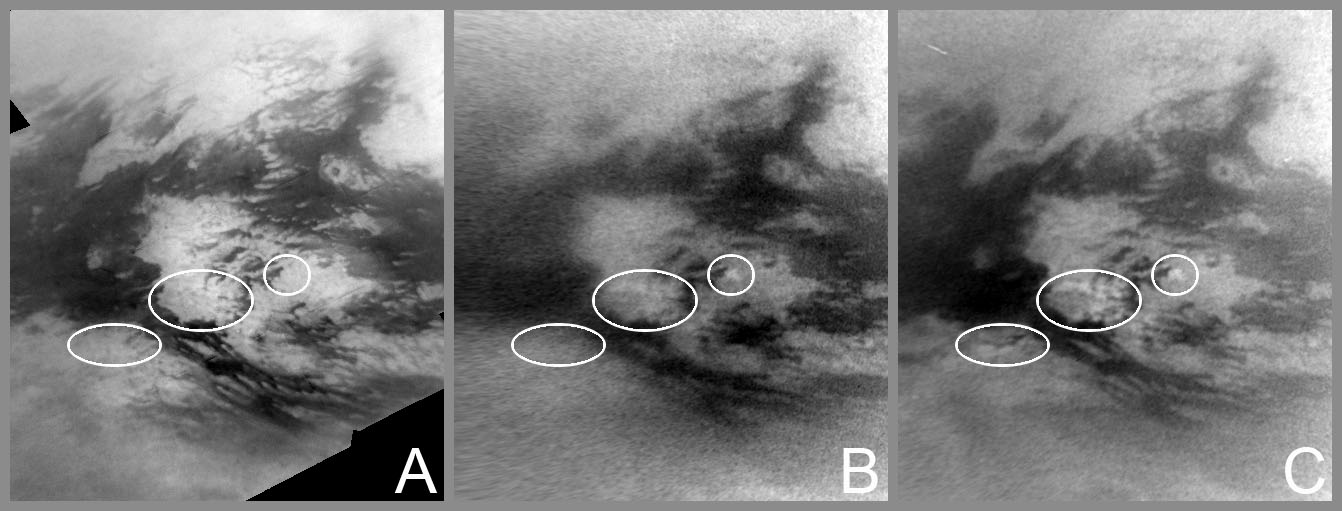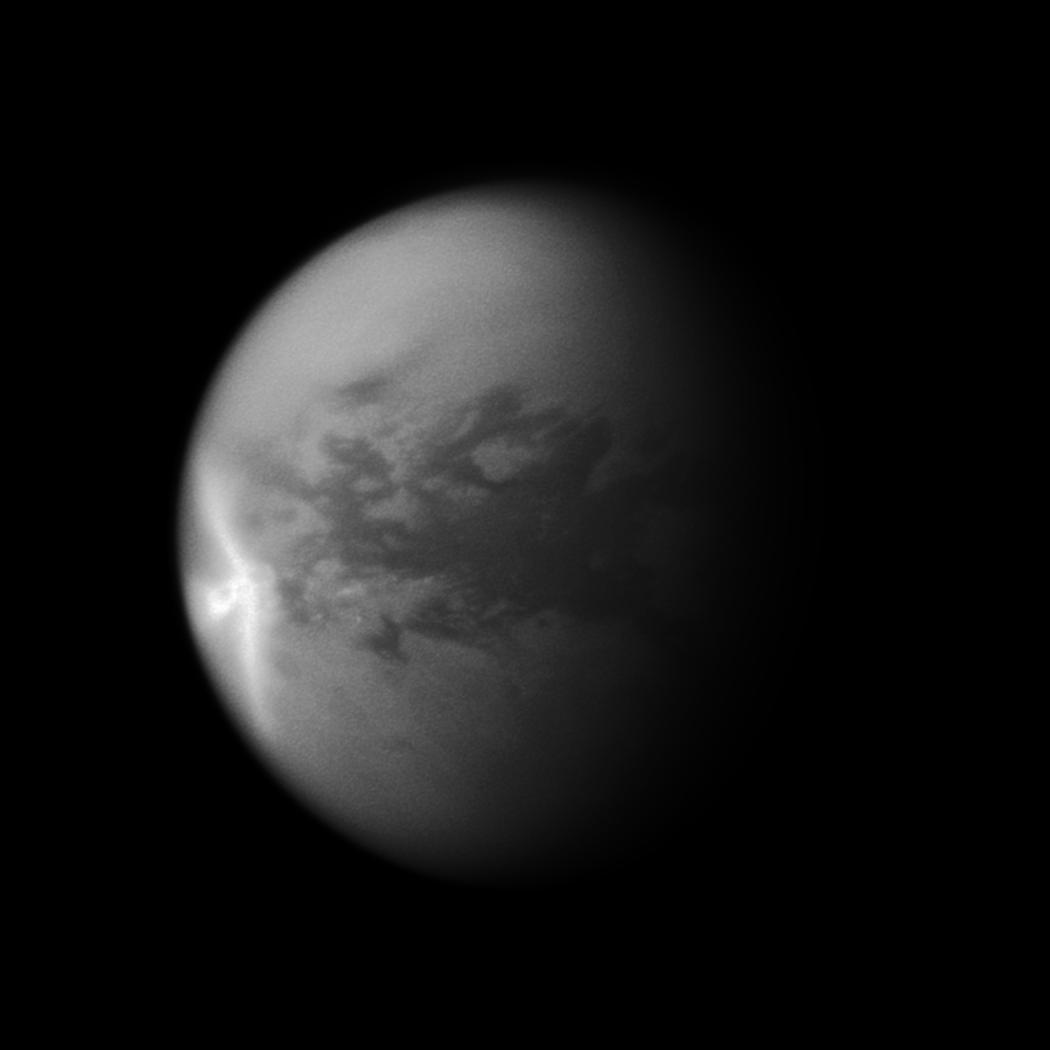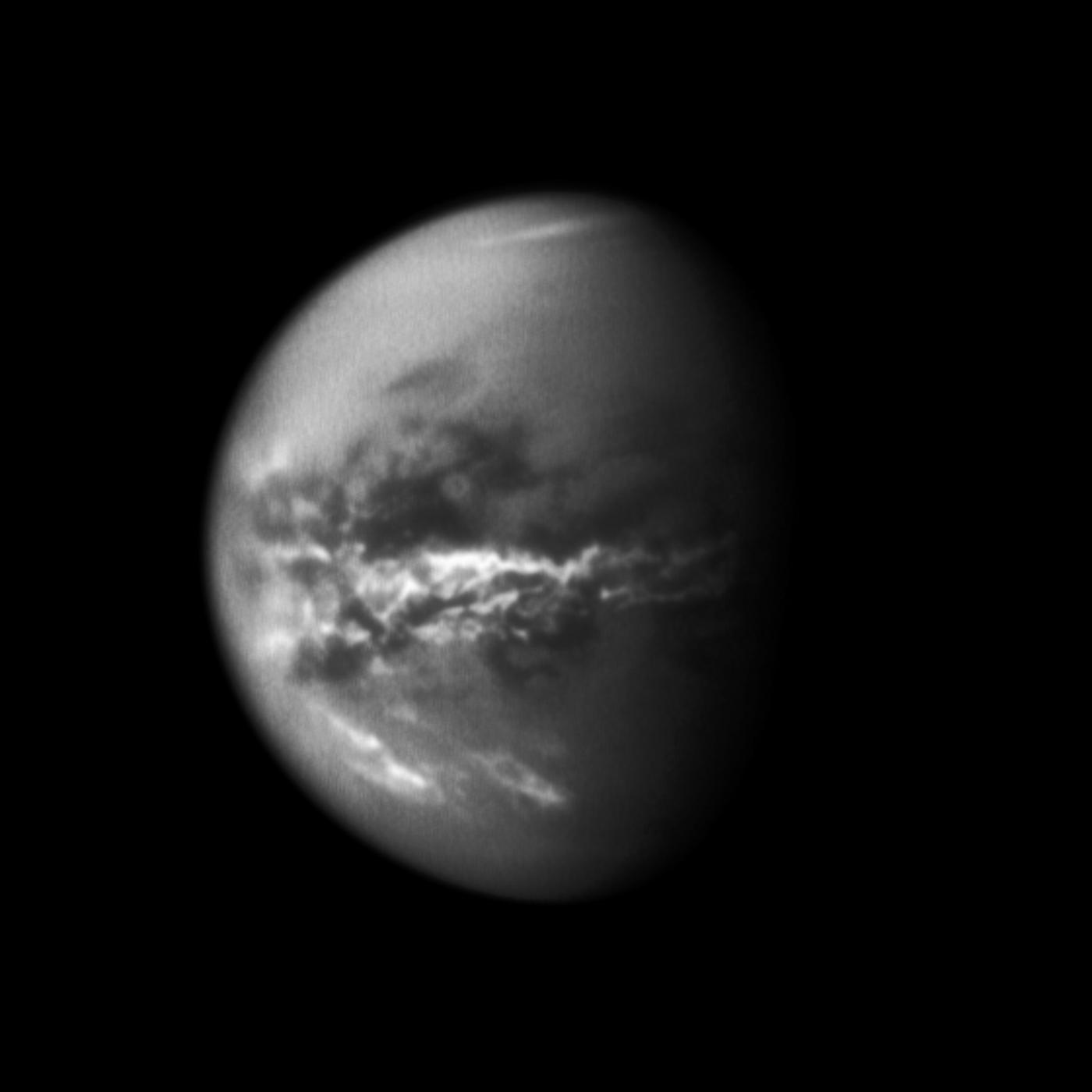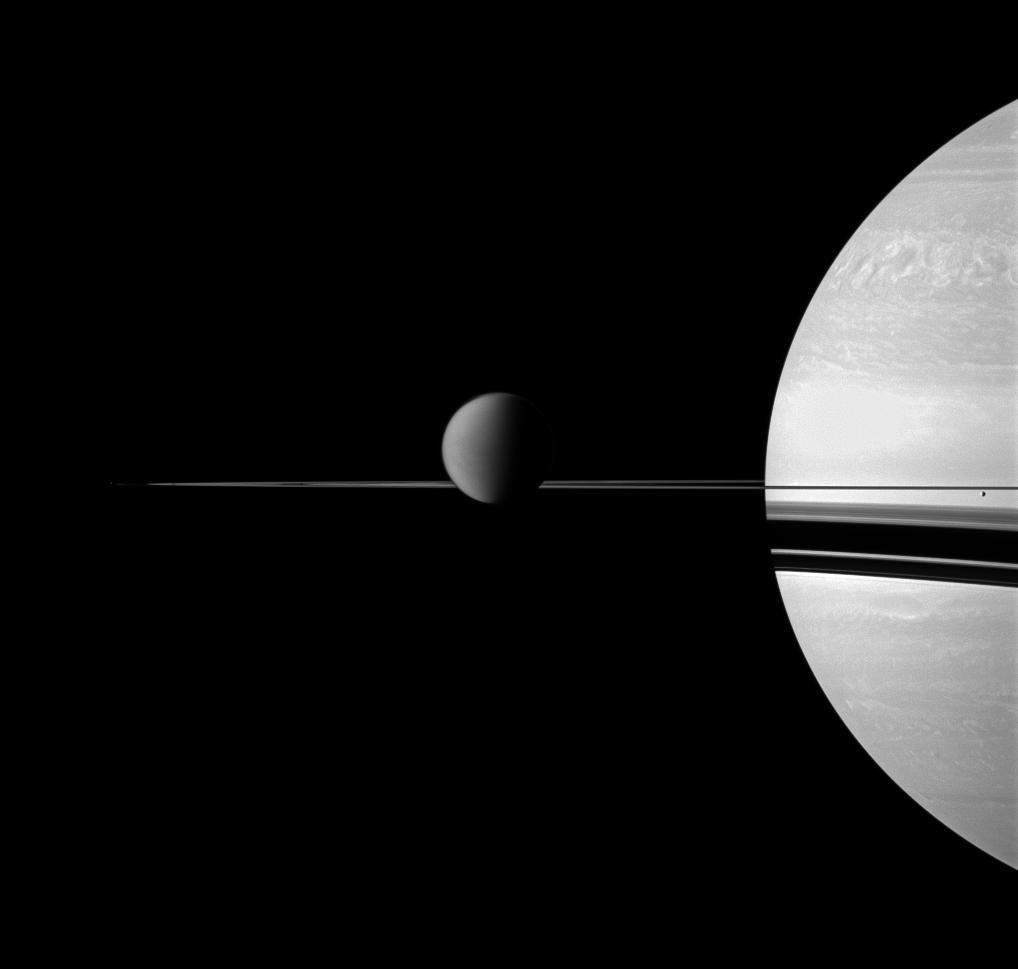This view obtained in visible blue light with the narrow-angle
camera of the Cassini probe on September 17, 2011 reveals a portion of
Saturn's rings as well as four of its moons, the bright Dione, the Opaque
Moon Titan behind it, Pan in the Encke Gap of the A ring on the left
of the view
and Pandora which can be found beyond the rings on the right of the view.
The photo was taken at a distance of about 1.3 million miles or 2.1 million
kilometers from Dione and at a Sun-Dione-probe, or phase, angle of
27 degrees. The camera is orientated toward the illuminated side of the
rings from just above the ringplane.
The bright Dione, approximately 1,123 km or 698 miles in diameter, which
appears just above the rings in the middle of the view, unveils its fractured
or wispy terrain that can be found in the trailing hemisphere of the
icy moon. Dione orbits Saturn at a mean distance of about 377,396 km
or 235,000 miles.
The Orange Moon Titan, approximately 5,150 km or 3,200 miles in diameter,
appearing in the background of the image, reveals its thick and opaque
atmosphere
as well
as its
dark
north
polar
hood. Titan orbits Saturn at a mean distance of about 1,221,870 km or
760,000 miles.
The small icy moon Pandora, approximately 81 kilometers or 50 miles
in diameter, unveils its oval shape to the right of the rings. Pandora
orbits
Saturn at a mean distance of about 141,720 km or 88,500 miles.
The walnut-shaped moon Pan, approximately 28 kilometers or 17 miles
in diameter, which can be found in the Encke Gap of the ring system,
swallows the ring particles
in its
surroundings. Pan orbits the gas giant Saturn at a mean distance of about
133,584 kilometers or 83,000 miles.
Image Credit: NASA/JPL-Caltech/Space
Science Institute |
